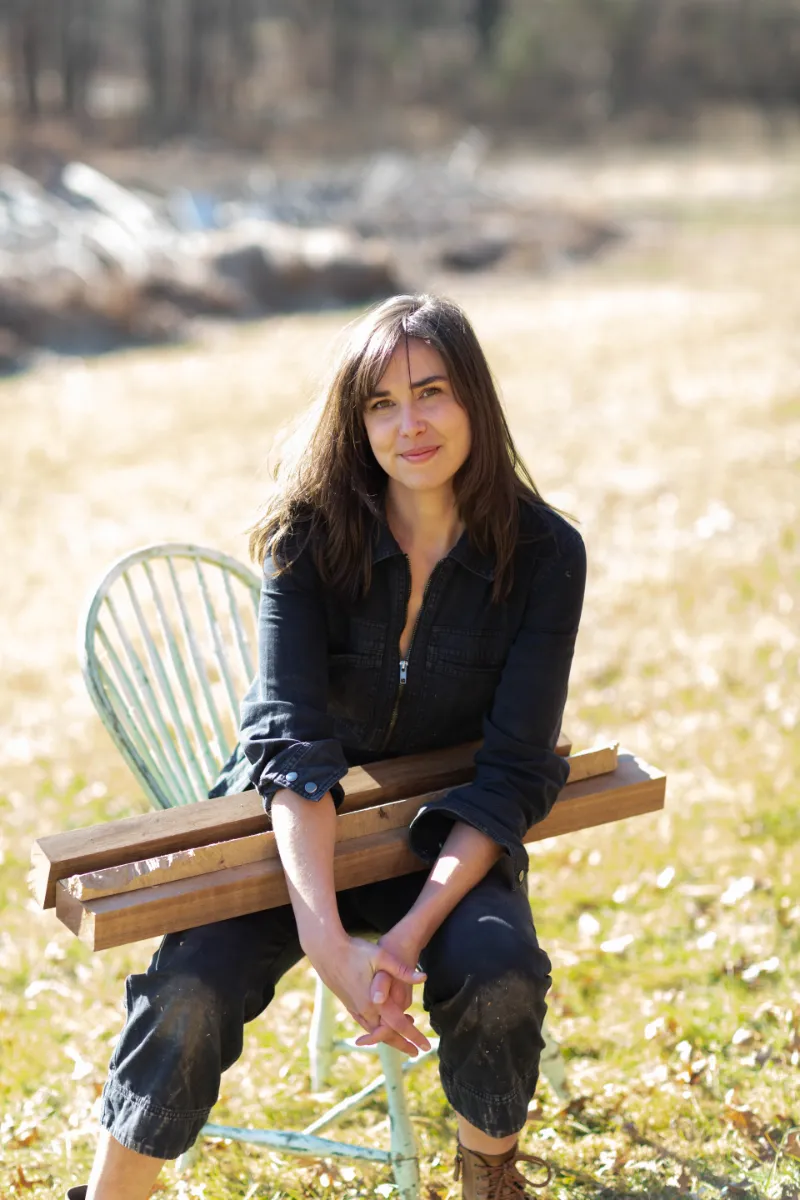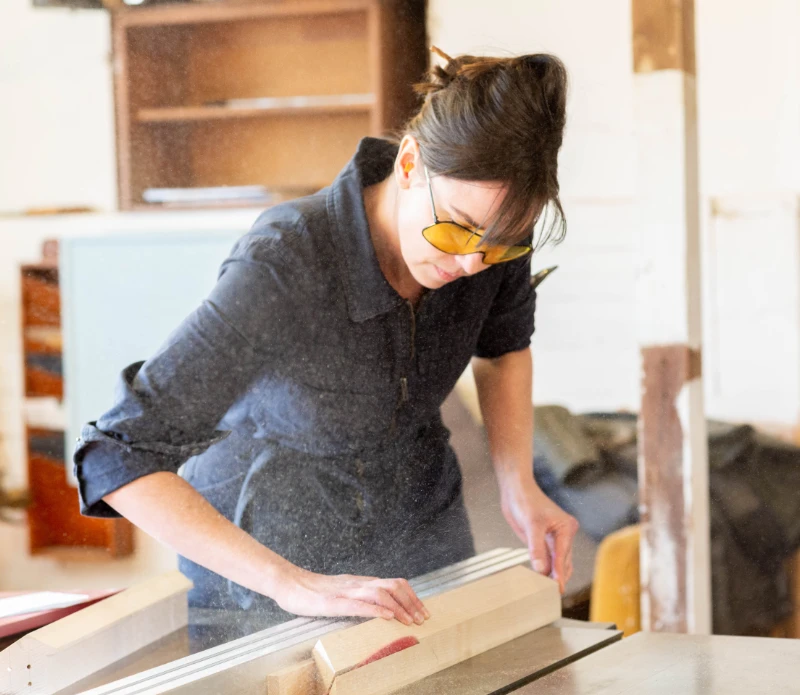Studio

Miriam Carpenter is a contemporary artist based in Bucks County, Pennsylvania whose work includes wood sculpture, furniture, ceramics and works on paper.
As a Rhode Island School of Design alumna, she began her career as a furniture designer at George Nakashima’s studio. Through new processes, her work explores things often overlooked—unveiling the hidden complexities around us. Carpenter’s work can be found internationally in both private and public collections and has been exhibited most notably at the Philadelphia Museum of Art, Michener Art Museum, Wharton Esherick Museum, Fuller Craft Museum, Marshall M. Fredericks Sculpture Museum, Museum for Art in Wood, Philadelphia International Airport, SOFA Chicago, Design Miami/Paris and Moderne Gallery where she is currently represented. In 2025, she was nominated for Cooper Hewitt, Smithsonian Design Museum’s National Design Awards, an official project of the White House Millennium Council which honors innovation and impact in design. She has been awarded six international residencies in the arts and is an active participant in artist collaborations around the globe.

Artist Statement
Concept
My work begins with a longing to unveil what’s often hidden: the quiet, intricate systems that weave through life—whether biological, mathematical, or emotional. I’m drawn to the invisible threads that connect us: between people, materials, ideas, and time. These are the things that make the visible possible. Through the objects I create, I seek to dissolve the boundaries we build between disciplines, traditions, and each other. I want to invite curiosity, engagement, and care—qualities that strengthen our relationship with the natural world and with one another.
Material and Method
My love of trees and passion for wood is deep and lifelong. It’s a material that feels both ancient and endlessly alive. Working with it grounds me through my pursuit of woodcarving, multi-axis turning, steam-bending and complex joinery. Yet I am also continually fascinated by the tactile language of other materials—clay, metal, paper—and the processes they invite, such as throwing and building, welding and fabrication, block printing and drawing. Working across diverse materials and processes allows me to create a wide range of forms, each made with intention, skill, and a deep respect for material integrity.
Fluidity across materials and processes is essential to my practice—it helps me to challenge conditioned thinking and opens space for learning. The approach is intuitive and adaptable and encourages the discovery of insights and connections between people, systems, and material.
Tradition and Innovation
Working with my hands, directly and actively engaging with the physical realities of material—with the known and unknown—is humbling and empowering. The fundamental processes have been passed down by generations before me. Yet, throughout my practice, I hope to push the boundaries of tradition to improve, evolve or create new opportunities and perspectives for the betterment and continuation of our collective legacy. All of my work is designed carefully and created with the highest level of craftsmanship so that what I create lasts—to improve our constructed world and strengthen our relationship with nature.
Research and Stewardship
Currently, I’m pursuing research into how biological processes might expand sculptural potential and inspire more ecologically sensitive approaches to making. I’m especially interested in how natural intelligence—slow, adaptive, precise—can inform new models of design that are regenerative, not extractive.
I build objects that are designed to last—materially and emotionally—so that each piece can hold meaning over time. Each work is an invitation to connect—through material, and through the process of making. At its core, this inquiry is about reverence: for nature, for materials, for making as a practice—and for the possibility that art, too, can be a form of healing.